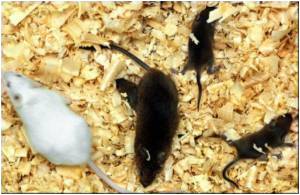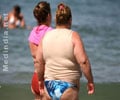A new study published in mBio finds Clostridium ramosum coupled with a high-fat diet, may cause animals to gain weight.

Previous studies have found C. ramosum and other representatives of the Erysipelotrichi class in obese humans, said senior study author Michael Blaut, PhD, head of the institute's Department of Gastrointestinal Microbiology. This suggests that growth of this organism in the digestive tract is stimulated by high-fat diets, which in turn improves nutrient uptake and enhances the effect of such diets on body weight and body fat.
"We were surprised that presence or absence of one species in a defined bacterial community affected body weight and body fat development in mice," says Blaut.
Blaut and colleagues investigated the role of C. ramosum in three groups of mice: some harbored a simplified human intestinal microbiota (bacteria) of eight bacterial species including C. ramosum; some had simplified human intestinal microbiota except for C. ramosum, and some had C. ramosum only. The researchers called the first group SIHUMI, the second group SIHUMIw/oCra and the third group Cra. Mice were fed either a high-fat diet or low-fat diet for four weeks.
After four weeks eating a high-fat diet, the mouse groups did not differ in energy intake, diet digestibility, and selected markers of low-grade inflammation. However, SIHUMI mice and Cra mice fed a high-fat diet gained significantly more body weight and body fat, which implies that they converted food more efficiently to energy than did the SIHUMIw/oCra mice. By contrast, all groups of mice fed a low-fat diet stayed lean, indicating that the obesity effect of C. ramosum only occurred on high-fat diets.
The obese SIHUMI and Cra mice also had higher gene expression of glucose transporter 2 (Glut2), a protein that enables absorption of glucose and fructose, and fat transport proteins including fatty acid translocase (Cd36).
Advertisement
Through additional studies Blaut said he hopes to learn more about how C. ramosumaffects its host's energy metabolism and whether similar results occur in conventional mice given the bacteria. "Unraveling the underlying mechanism may help to develop new strategies in the prevention or treatment of obesity," he said.
Advertisement
Source-Eurekalert















